Machu Picchu: The Lost Inca Citadel
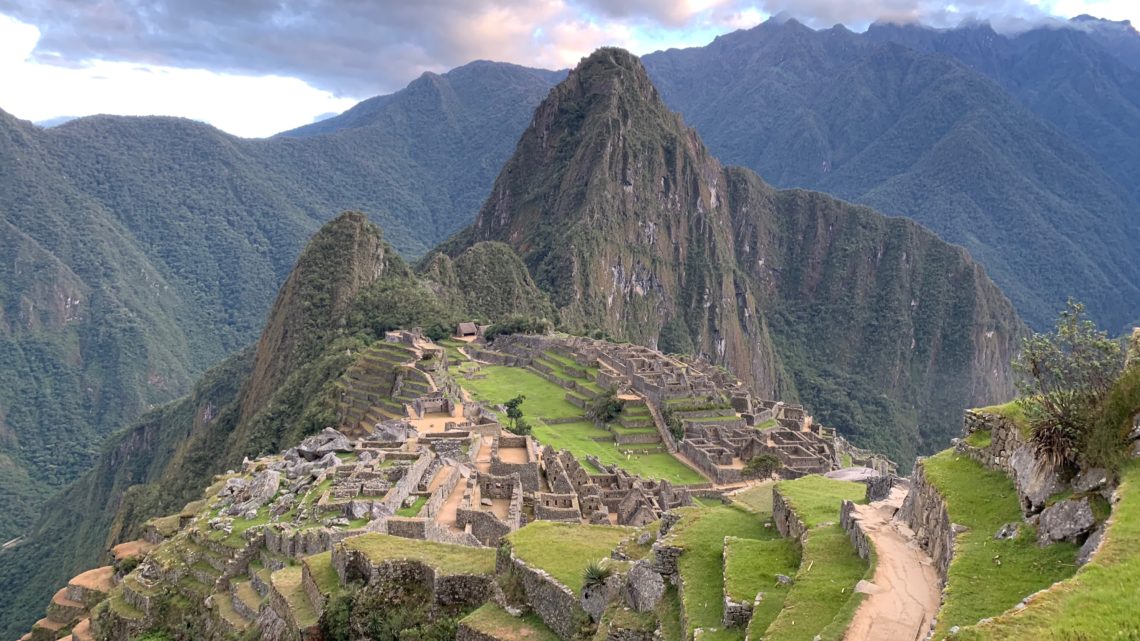
The most important day of the trip was finally here! After a long and challenging trek through the Andes, we had finally arrived at Peru’s most famous site: Machu Picchu.
Ever since its rediscovery, tourists from all over the world have flocked to Machu Picchu to admire its mysterious beauty. Due to the high number of visitors, the Peruvian government has established strict guidelines regarding when people can visit. Tourists must be accompanied by a guide and need to reserve a specific time slot in advance.
The Hike to Machu Picchu
Fortunately, our group had Elvis as our official tour guide and tickets to enter the citadel at 6:00 a.m., in order to beat the afternoon crowds. We woke up extremely early at 4:00 a.m. and began heading from our hotel towards the entrance at the base of the citadel. Elvis told us to meet him there at 5:00 a.m. when visitors can first begin hiking to the top of the mountain.
For those who don’t want to hike, a shuttle bus is available for 12 USD each way. Patty, Amy, and I opted to hike, while Ilana, Maggie, and Elvis took the bus. The hike up to Machu Picchu consists of 1000+ stone steps. We began our hike with a few other travelers while it was still pitch black outside. As a result, I needed to use the flashlight on my iPhone to light up the steps in front of me.
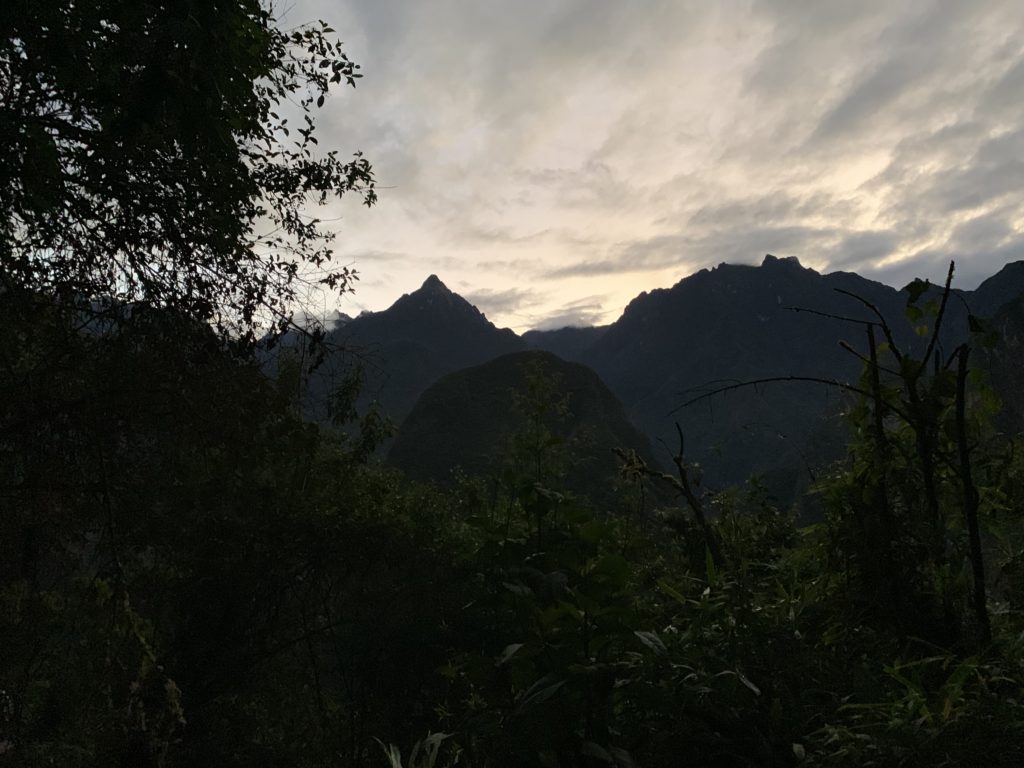
The trail took us through a lush area surrounded by tall trees and other plants. Every once and a while, we would cross the road that leads the buses to the top of the mountain. About a half-hour into the hike, the sun slowly began to rise over the mountains around me. As I got closer to the citadel, the familiar shape of the Huayna Picchu Mountain in front of the ruins became visible. After a couple more flights of stairs, I arrived at the entrance to the famed site, just in time for sunrise.
Entering the Citadel
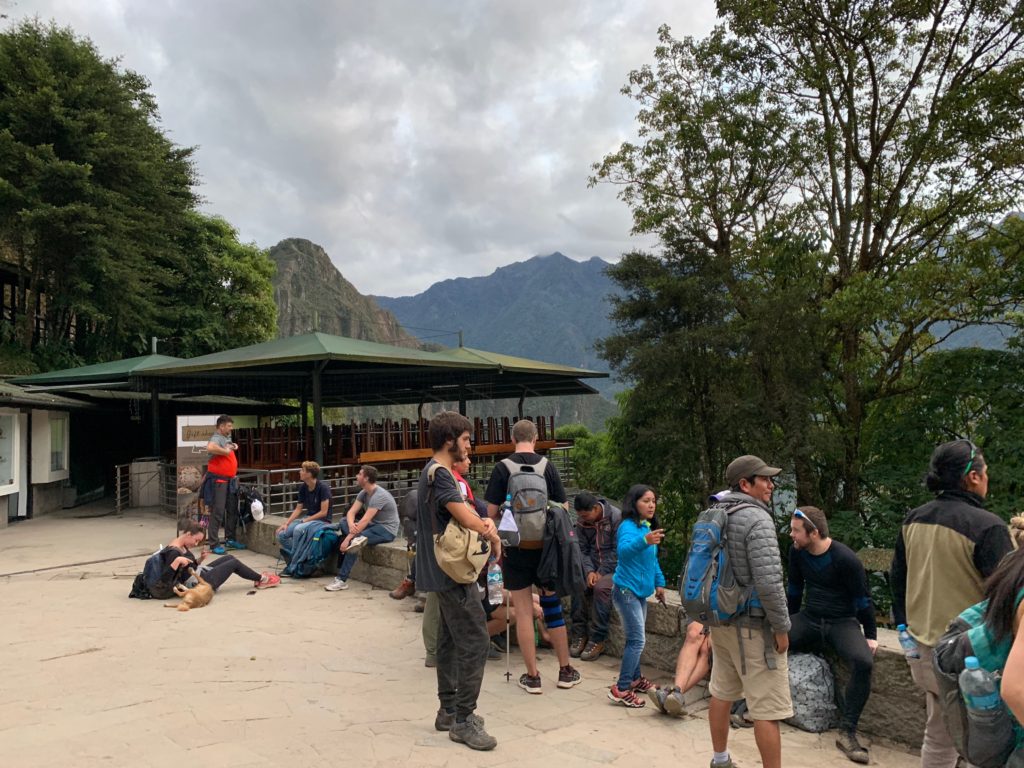
We arrived at the entrance just as the first group of crowds was getting there. Although it was still busy, there were far fewer people than there would be later in the afternoon. After our group gathered together, we pulled out
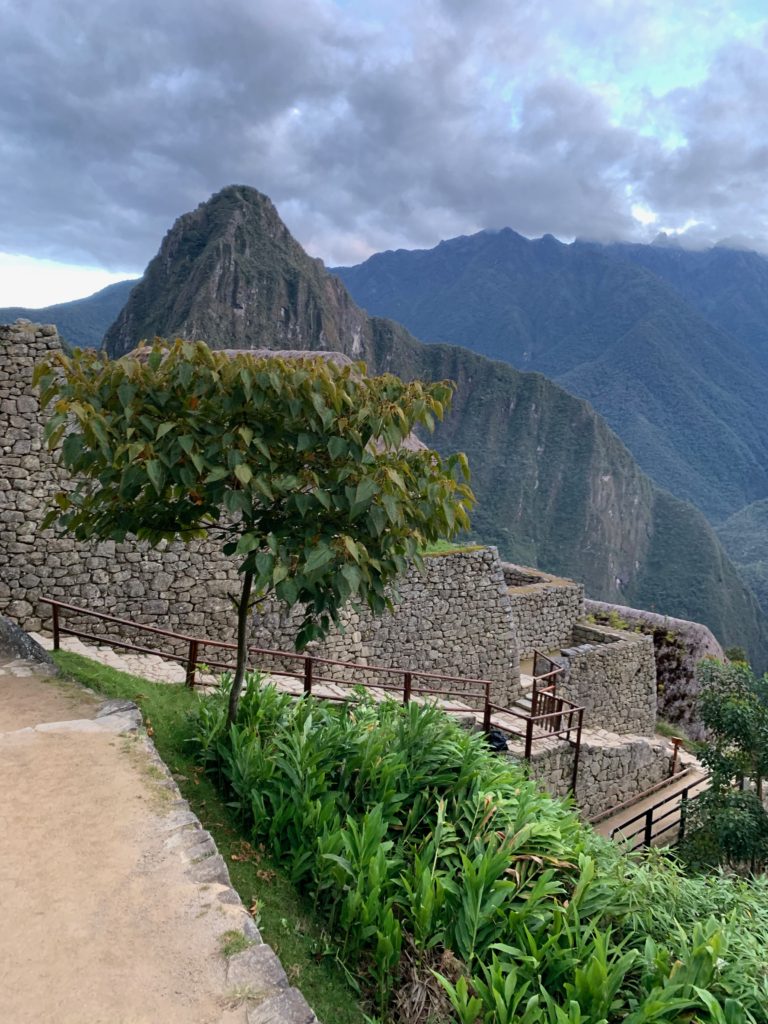
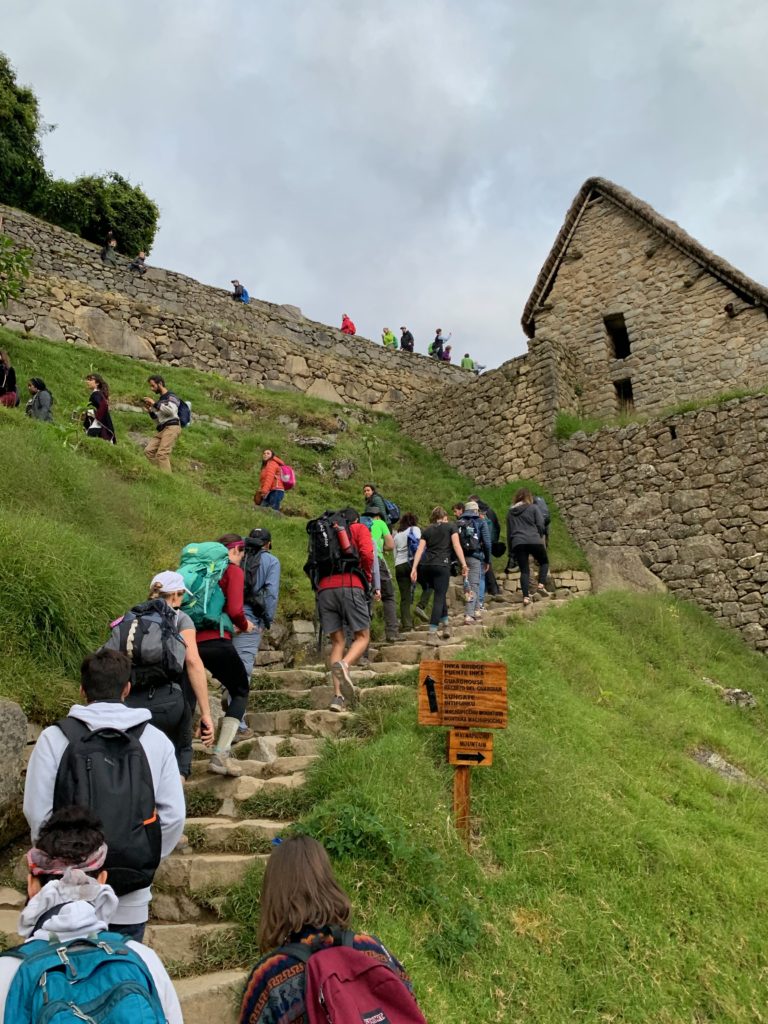
The pathway continued ahead towards the iconic Huayna Picchu peak that I have always seen in pictures. Our group continued up the stairs towards the upper terraces. From here, I could see the House of the Guardians: the most prominent pitched-roofed structure on site. The stairs meandered back through the woods before we arrived on one of the citadel’s many terraces. Once we got there, I was absolutely blown away with what was in front of me.
The Panoramic View
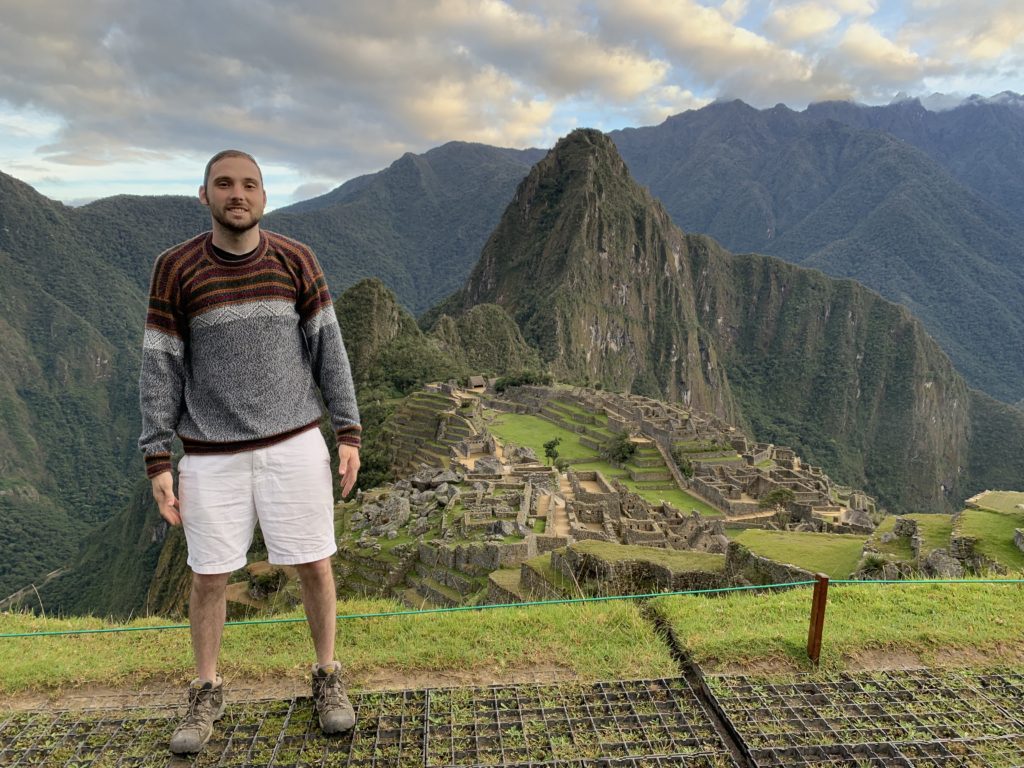
I couldn’t believe I was actually looking down at the spectacular ruins of Machu Picchu that I only ever dreamed of visiting! As one of the New Seven Wonders of the World, this ancient Inca citadel was the perfect reward for a long and challenging trek. Although most people arrive here by train, it definitely felt even more worthwhile to have gone the extra mile to walk here.
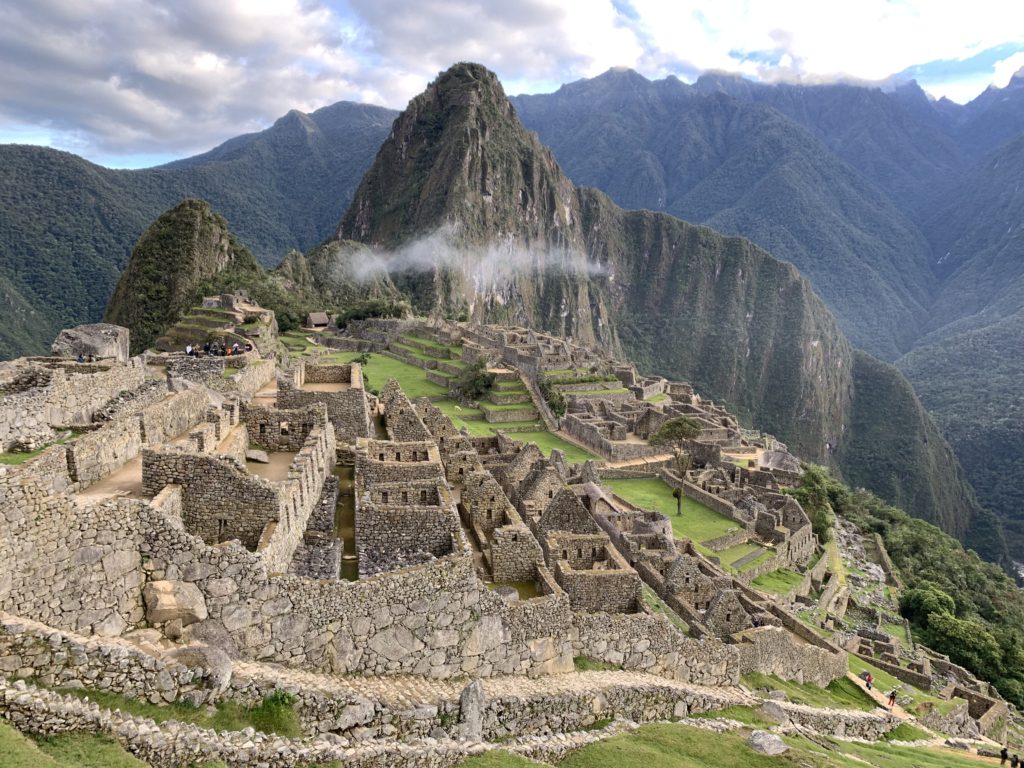
From our lookout point at the top, I could see all across the sprawling main settlement. The weather outside was mostly clear, giving me the classic Instagram-worthy picture of the ancient citadel. Elvis had us arrive early on purpose to be able to get a panoramic view of Machu Picchu before all the crowds arrived. We were standing in the sector of the settlement that the Incas used for agriculture, characterized by long rows of terraces spread along the mountainside.
The Urban Sector
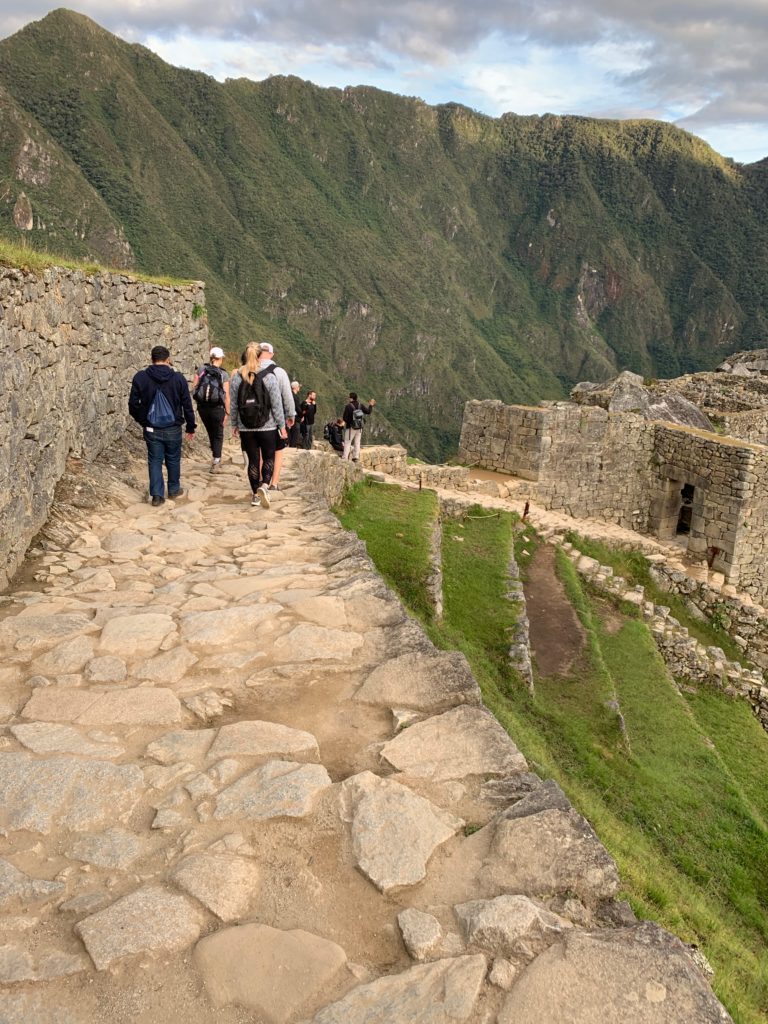
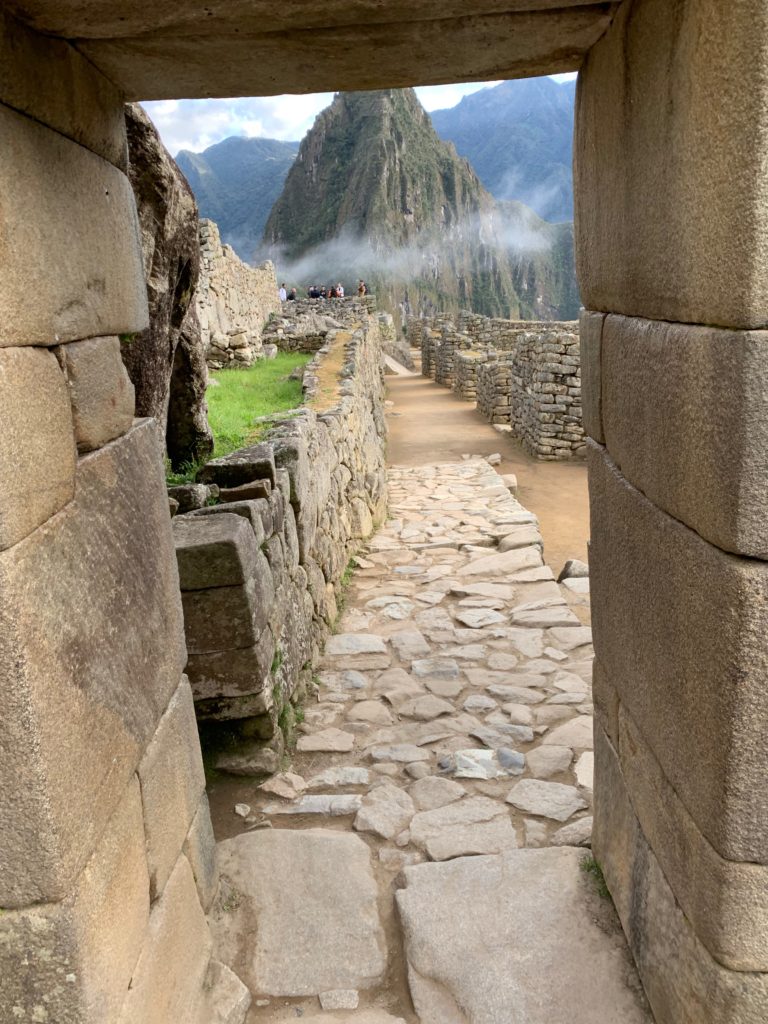
We meandered around the terraces and walked down some stairs towards the city ruins. One of our first major sites was the ancient city gate: the main entrance into the urban sector of Machu Picchu. As I looked through this iconic stone arch, I could see what was once a major street lined with simple stone houses. The street is on axis with the peak of Huayna Picchu.
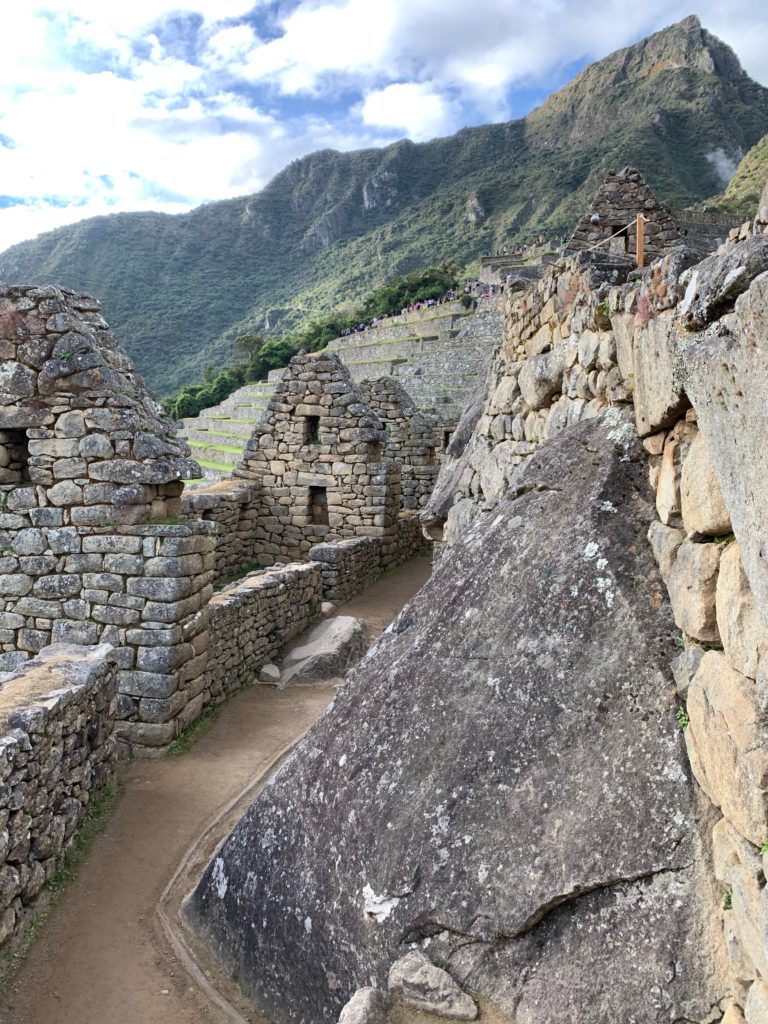
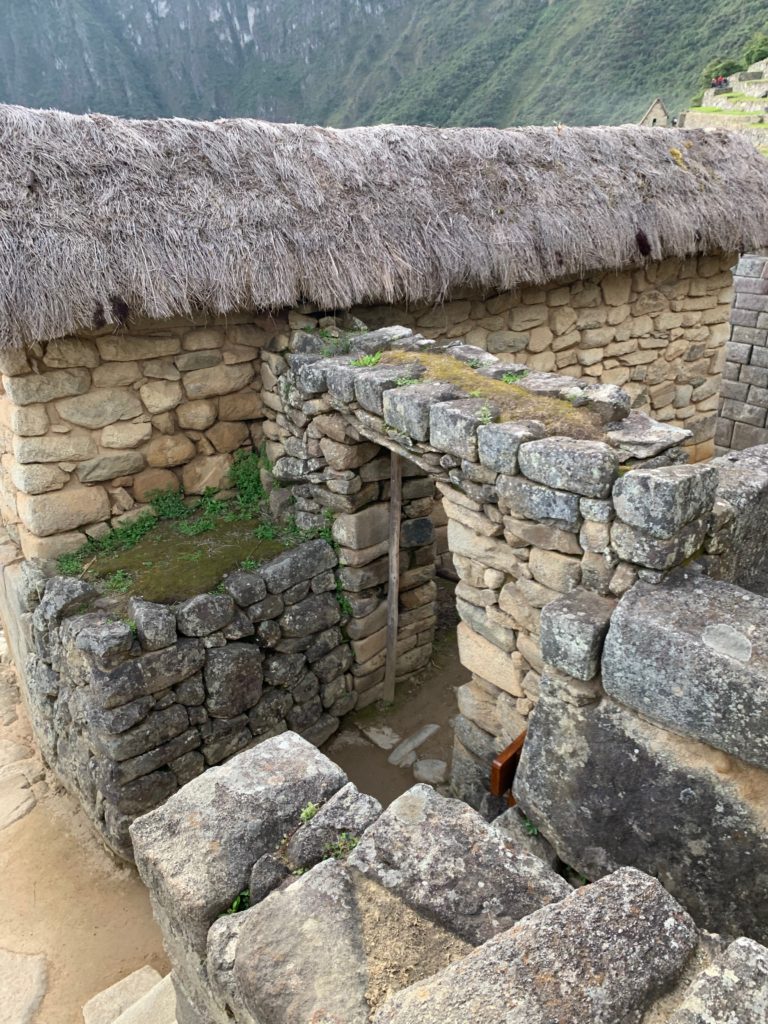
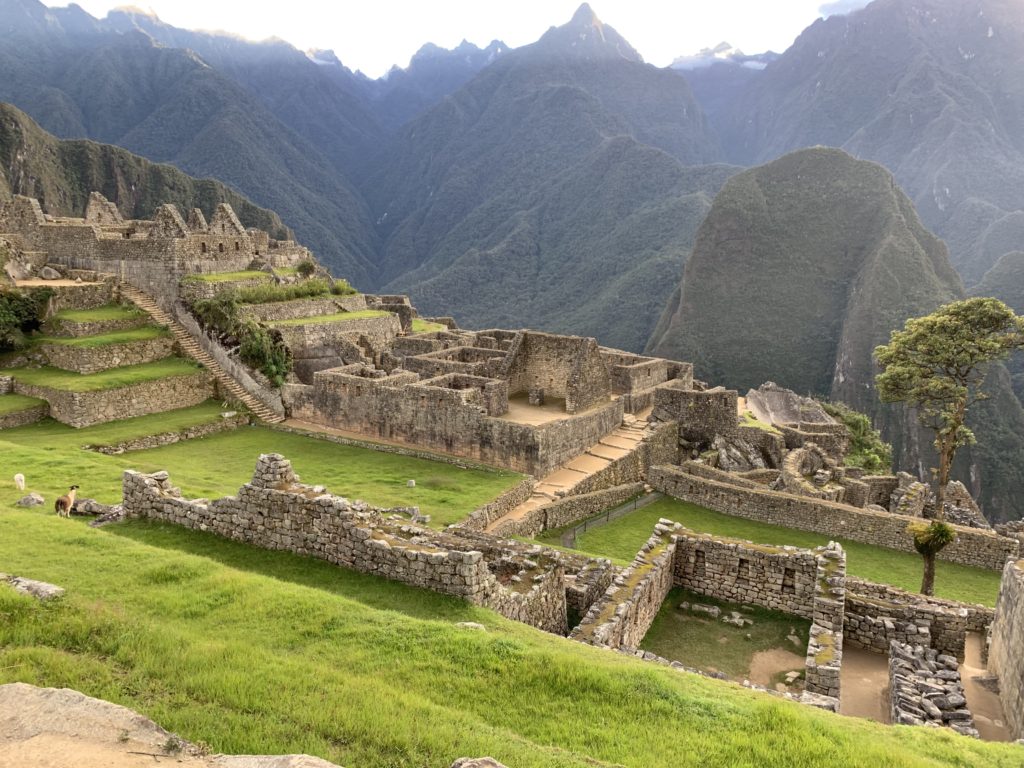
As we passed through the gate, we walked by the row of stone houses, which Elvis explained were once occupied by ordinary citizens. These homes are made of a more jagged stone material than the temples and elite dwellings on site. Unlike the stone bases of the houses in Cusco, I could clearly run my finger between the stones here. The buildings once had thatched roofs supported by wooden beams. Today, most of the ruined homes remain uncovered. Grassy open terraces separate the individual houses.
Temple of the Sun
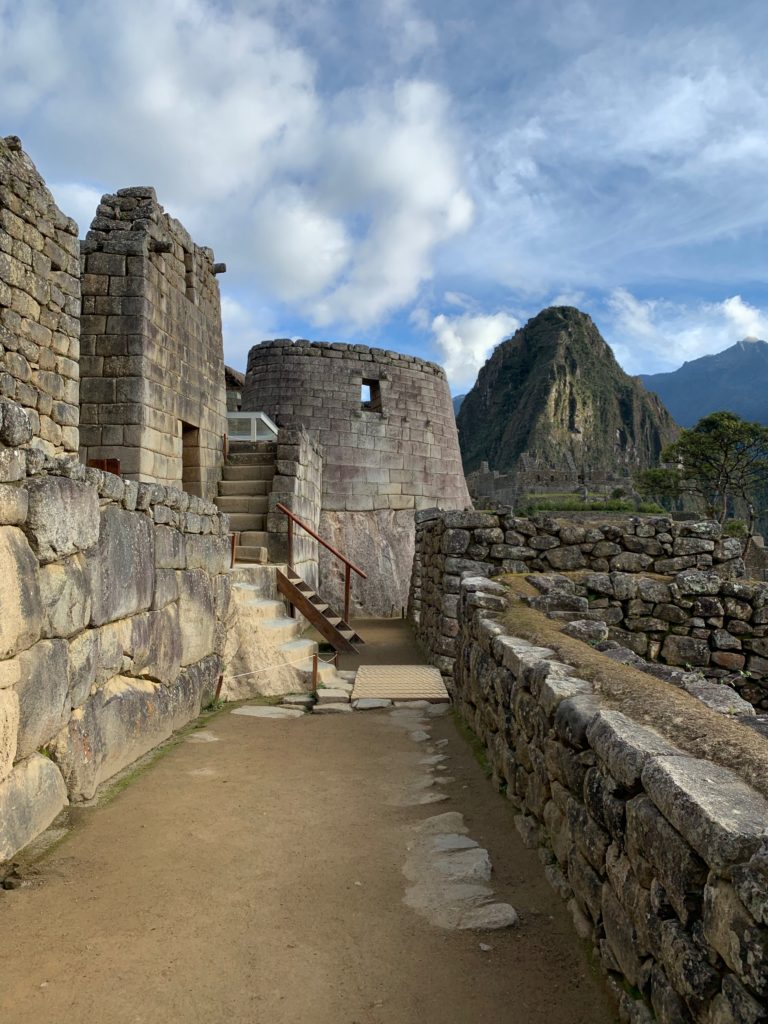
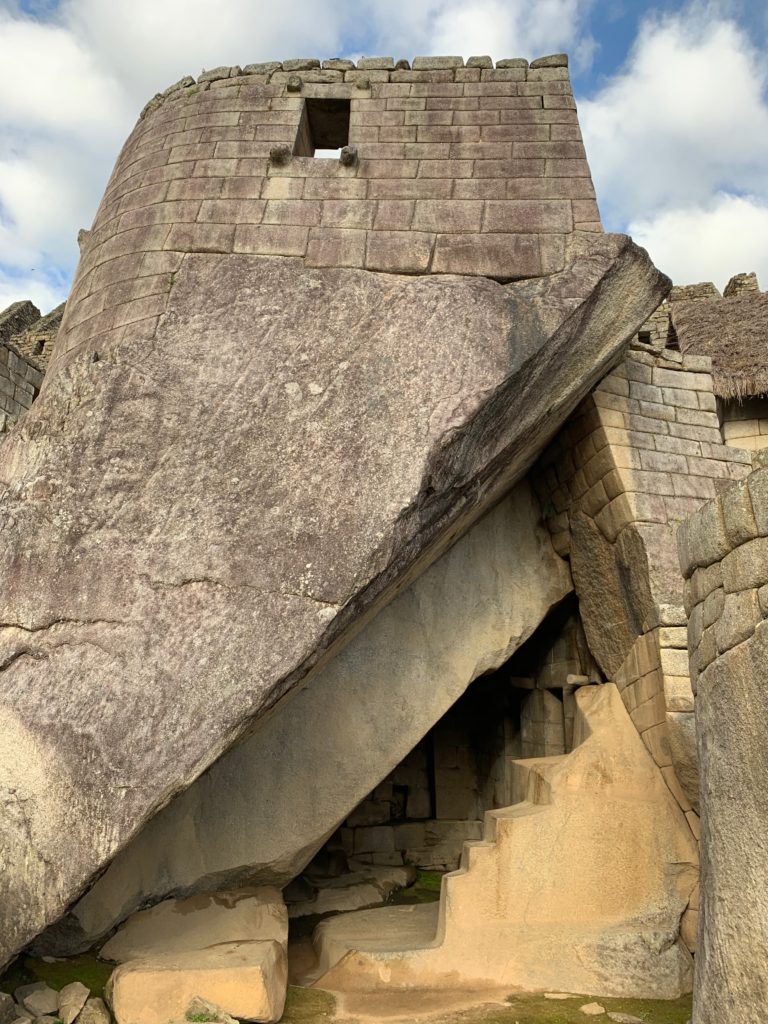
After climbing down a
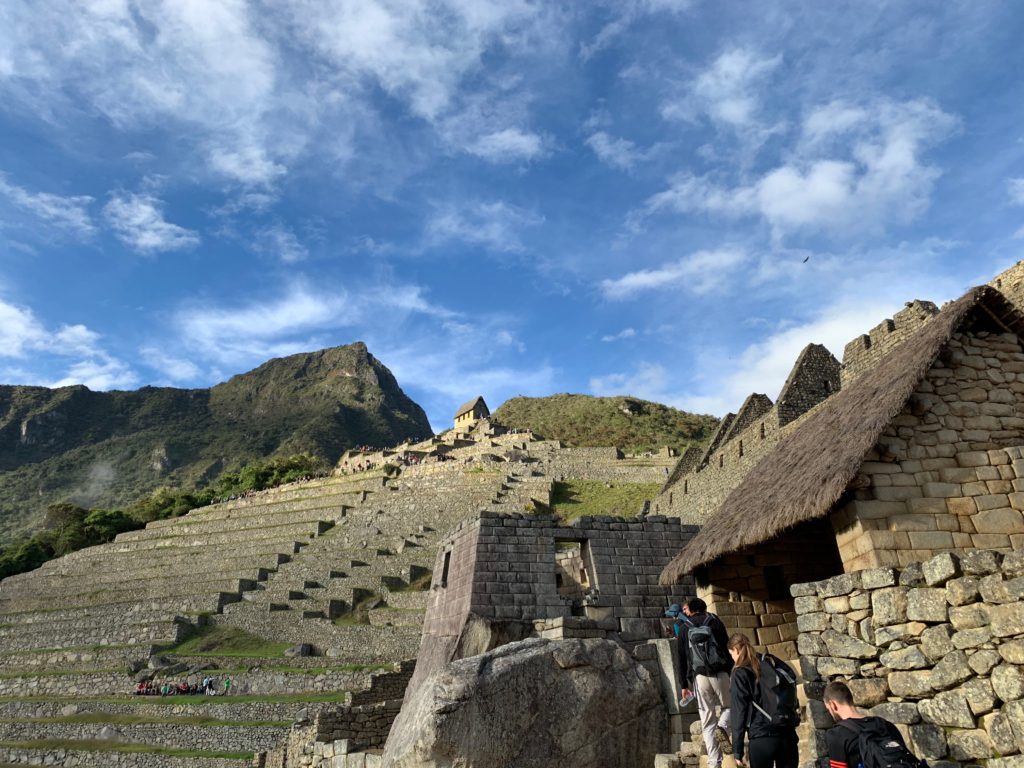
From the urban sector, I got a commanding view of the cultivation terraces in the agricultural sector where we began our visit. Much like at other Inca ruins, these terraces are long and are built to conform to the natural environment. However, they are much more elaborate than others I saw, such as Moray. The Incas built these terraces to drain the water from heavy rains and keep their crops in place.
Sacred Plaza
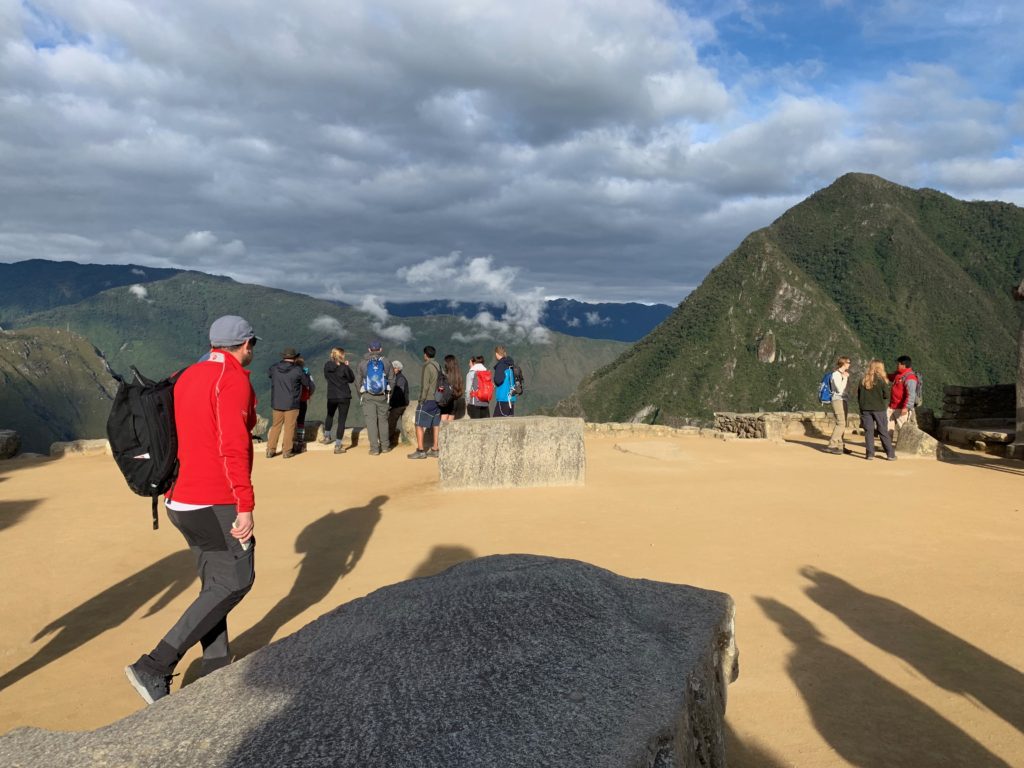
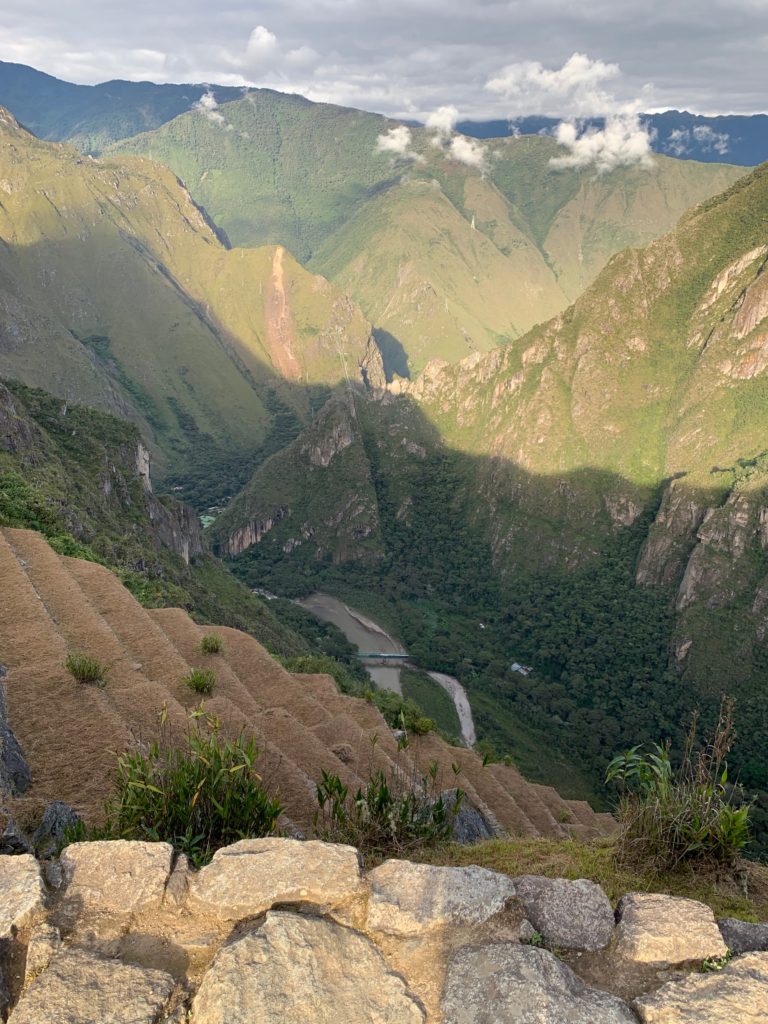
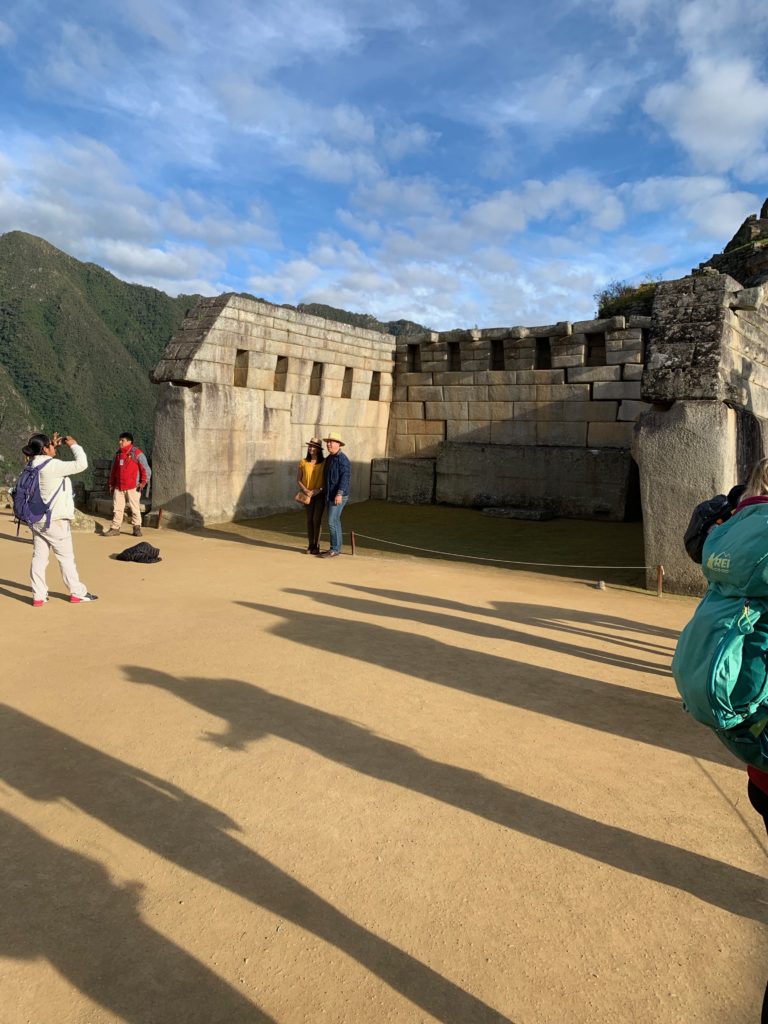
Elvis took us north to an open square. From here, we got a breathtaking view of the surrounding Andes Mountains, and could even see down into the valley where we walked along the train tracks the day before. We also passed by the ruins of the site’s main temple. It is believed that the Incas used this space for performing important rituals. However, the site is still a mystery to many historians. The ruins consist of three walls and a series of niches, but no fourth wall. Archeologists debate whether this was done on purpose, or whether it’s another piece of evidence that Machu Picchu is an unfinished citadel.
The Main Square
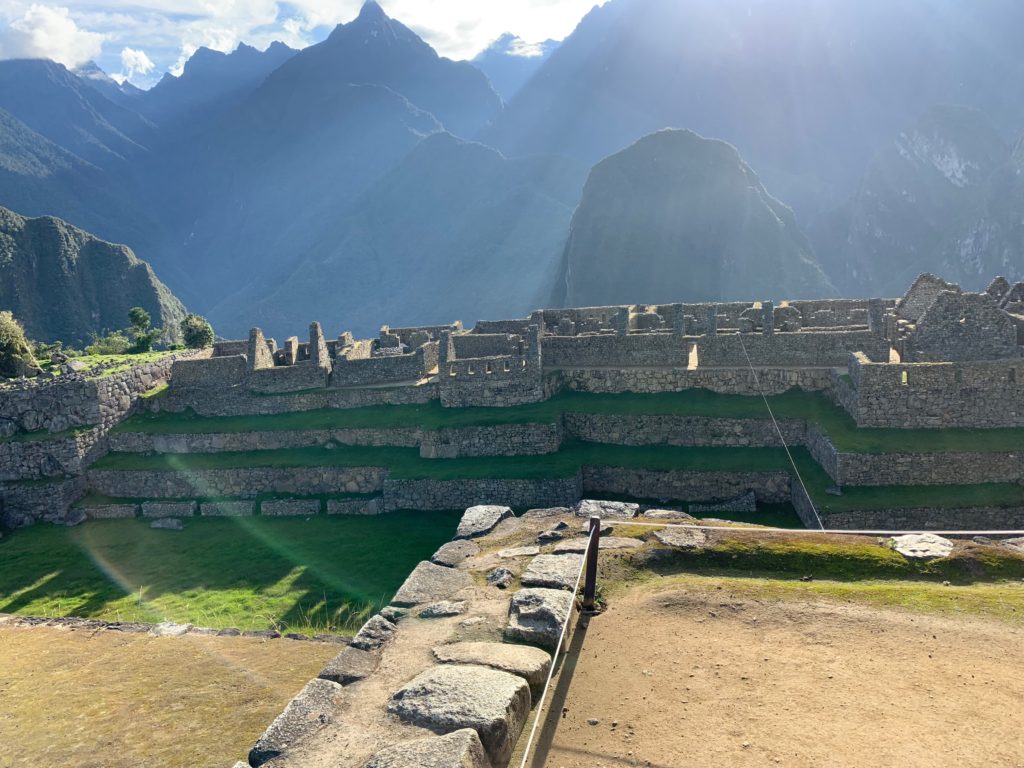
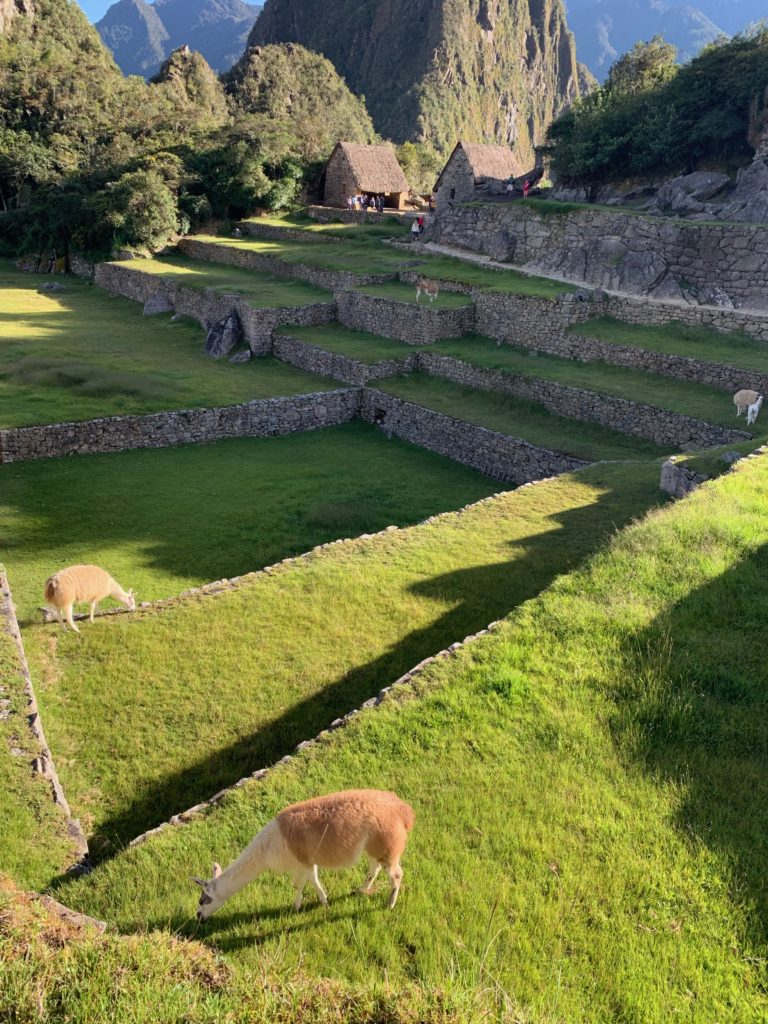
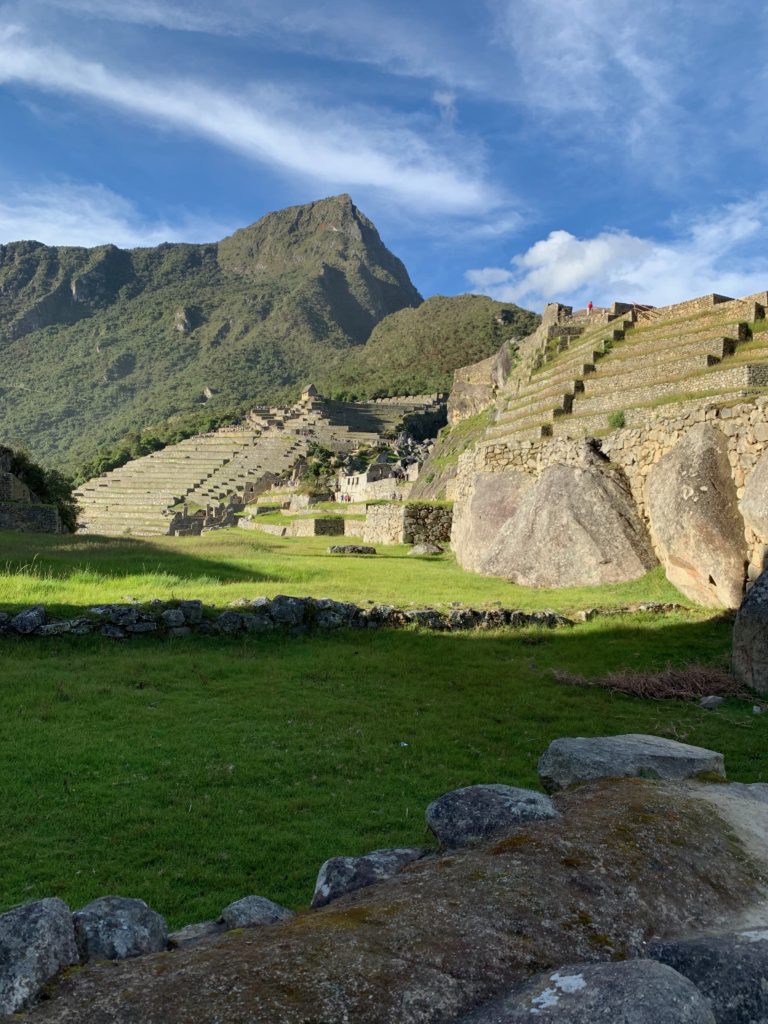
We continued past the temple and through the main square of the city. This large open area is surrounded by stone terraces that lead down into a central stage area. It is believed that the public rituals were performed here, as opposed to the more private rituals that occurred in the temples. Today, the area is a popular grazing spot for Machu Picchu’s alpacas.
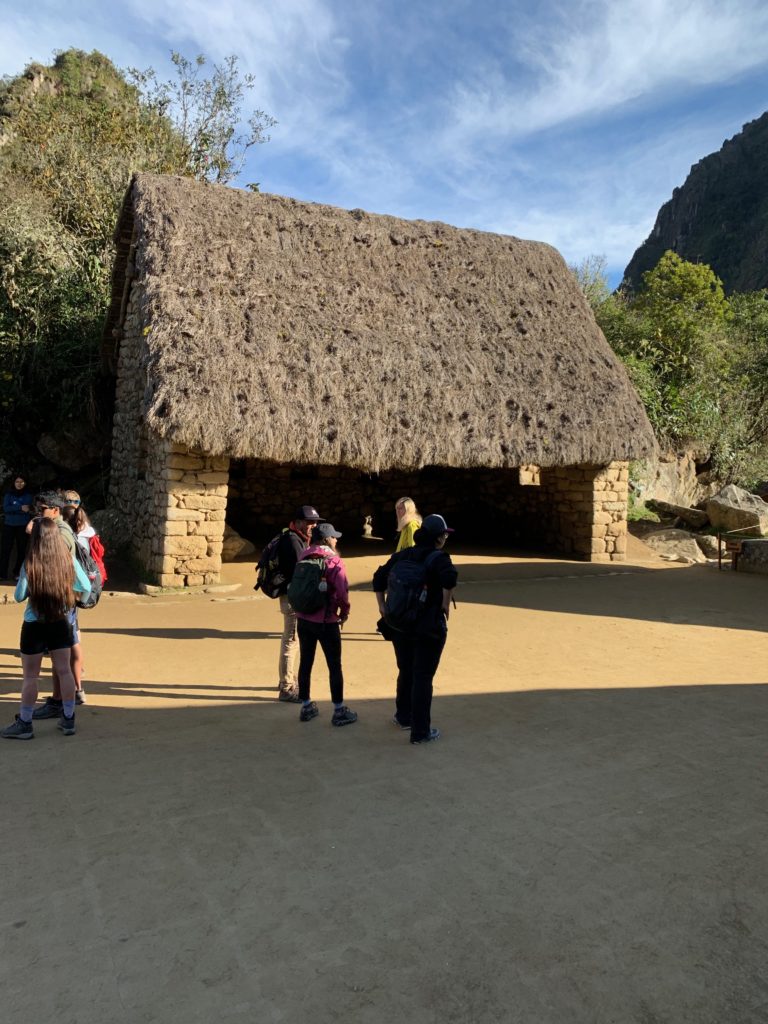
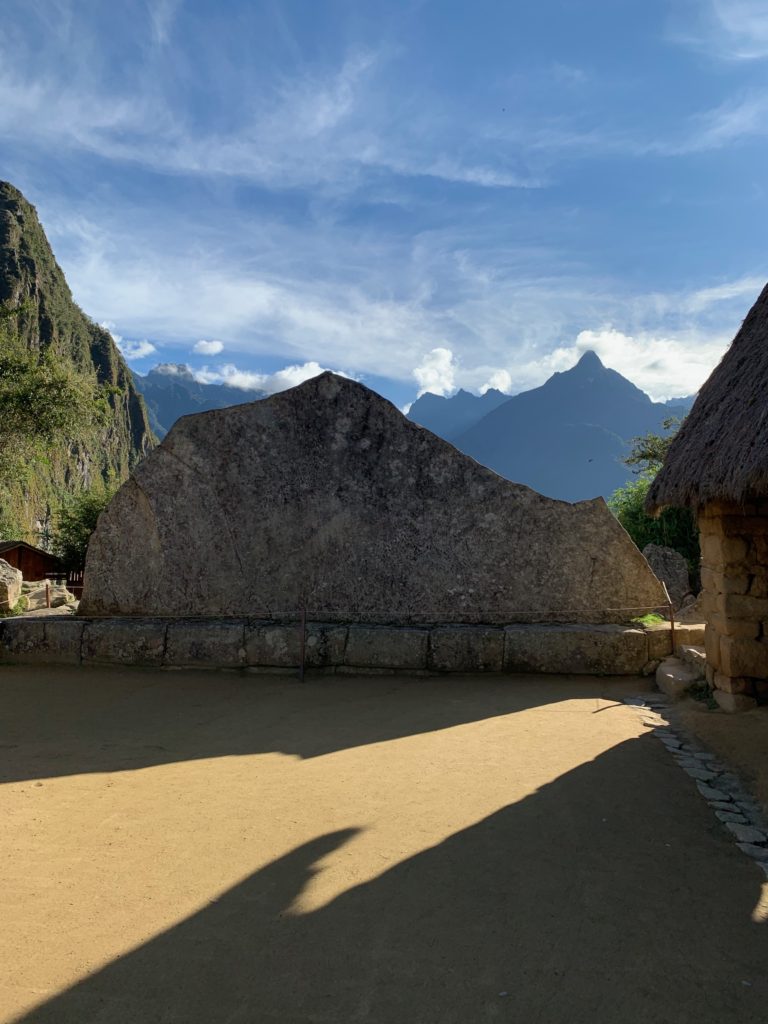
We finished our tour at the Sacred Rock: a large stone slab surrounded by thatched-roof houses. Unfortunately, we had to say goodbye to our amazing tour guide, Elvis. His knowledge about the Salkantay Pass, Machu Picchu, and Inca culture, as well as his enthusiasm and constant support really made this trip stand out as one of my favorites! We thanked him for the amazing tour and gave him a generous tip before we parted ways.
Discovering More Secrets
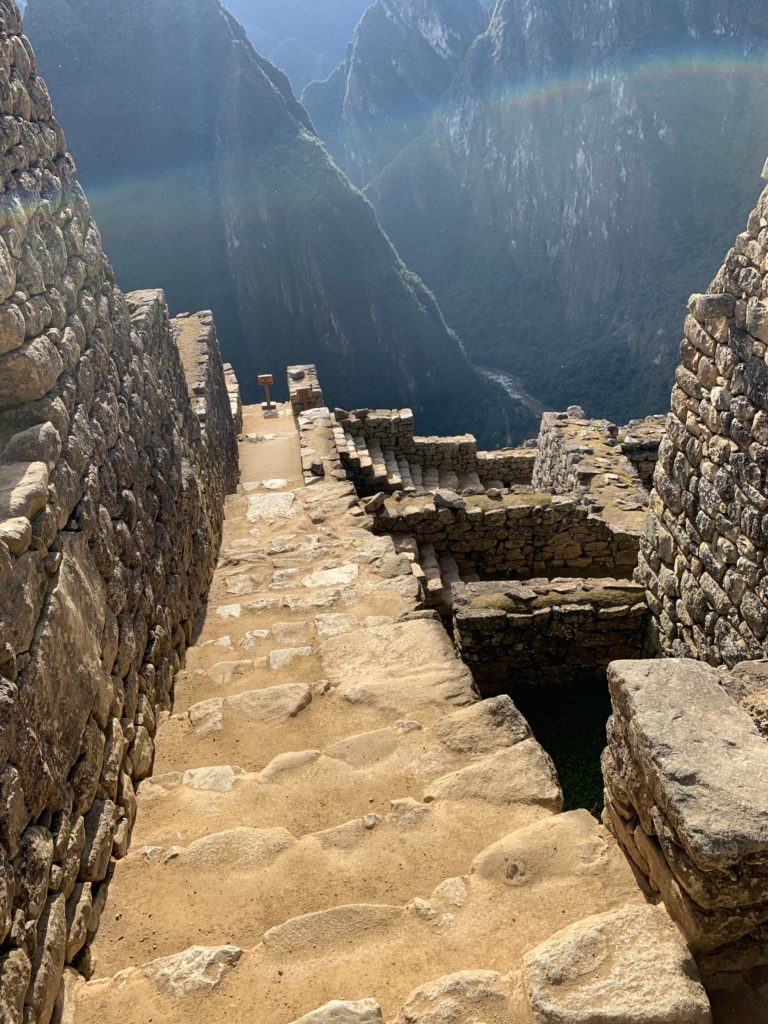
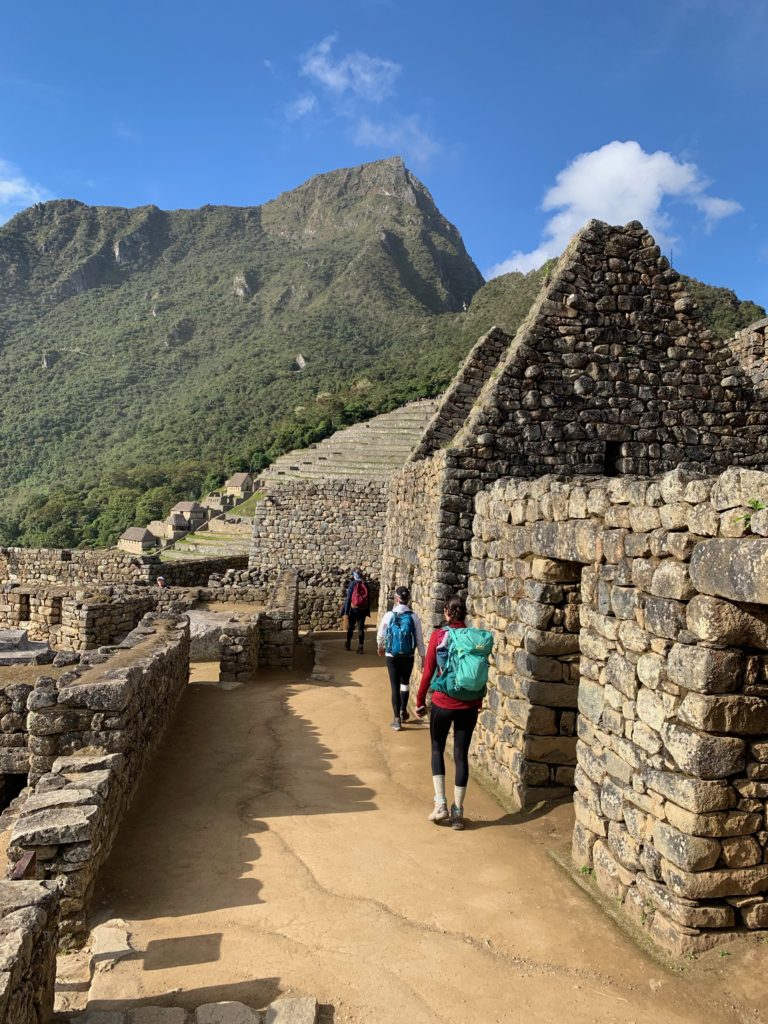
Ilana, Maggie, Patty, Amy, and I exchanged contact info, as we had become great friends throughout the journey and knew that we had many pictures and memories to share! We continued wandering around the citadel in search of a few more landmarks that Elvis challenged us to find. They were located in the Industrial Zone, where the Incas did pottery, weaving, and dye making, amongst other things.
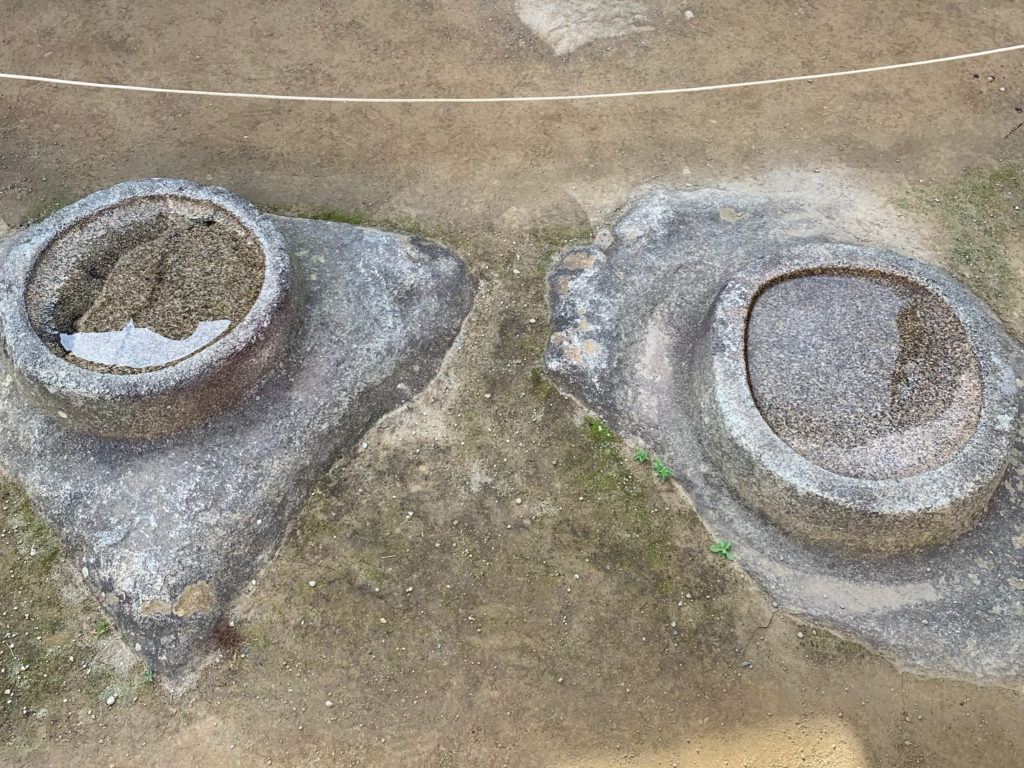
The first of these landmarks was a house with two stone reflecting pools on the floor. Although some archeologists believe that these were large mortars, it
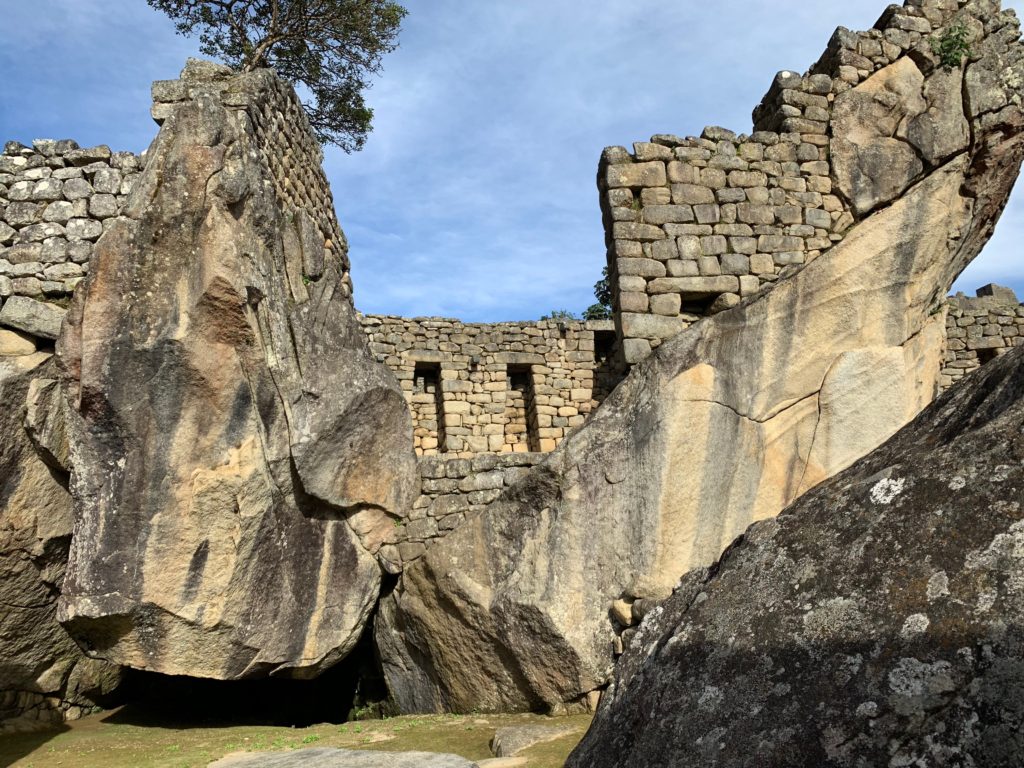
The second landmark was a bit harder to find. Elvis told us to look for a condor. Although it was hard to spot at first, we eventually came to the uniquely carved stone temple. The rock is shaped to resemble a bird’s head and wing and is a prime example of the Incas’ fine ability to work with stone.
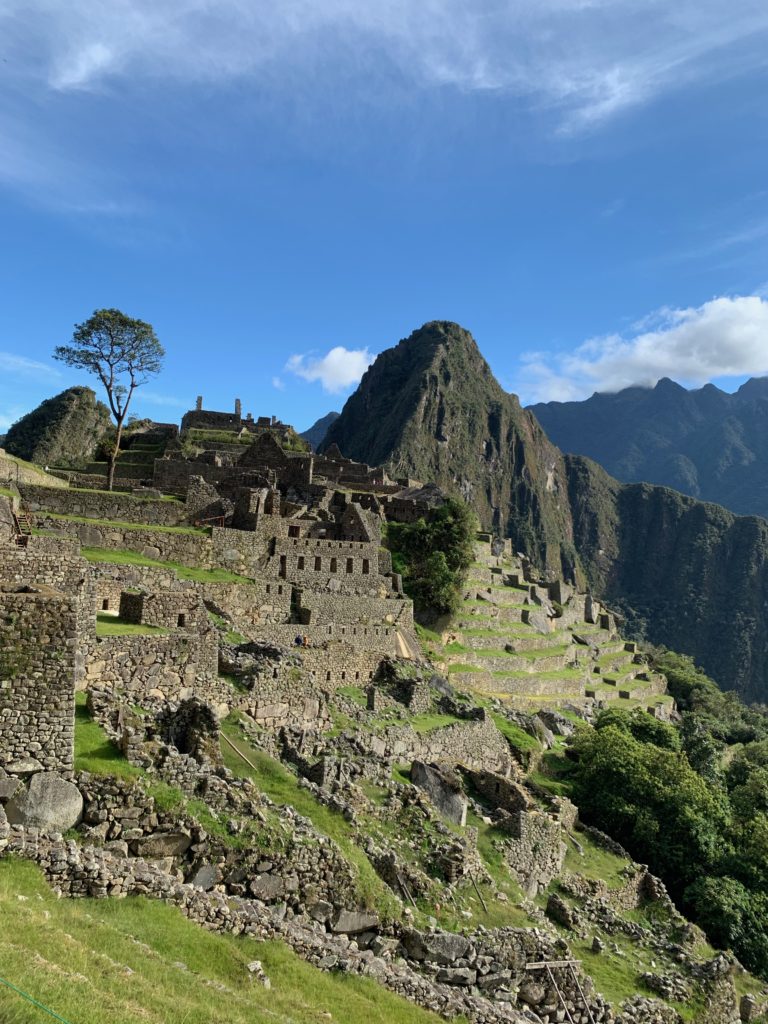
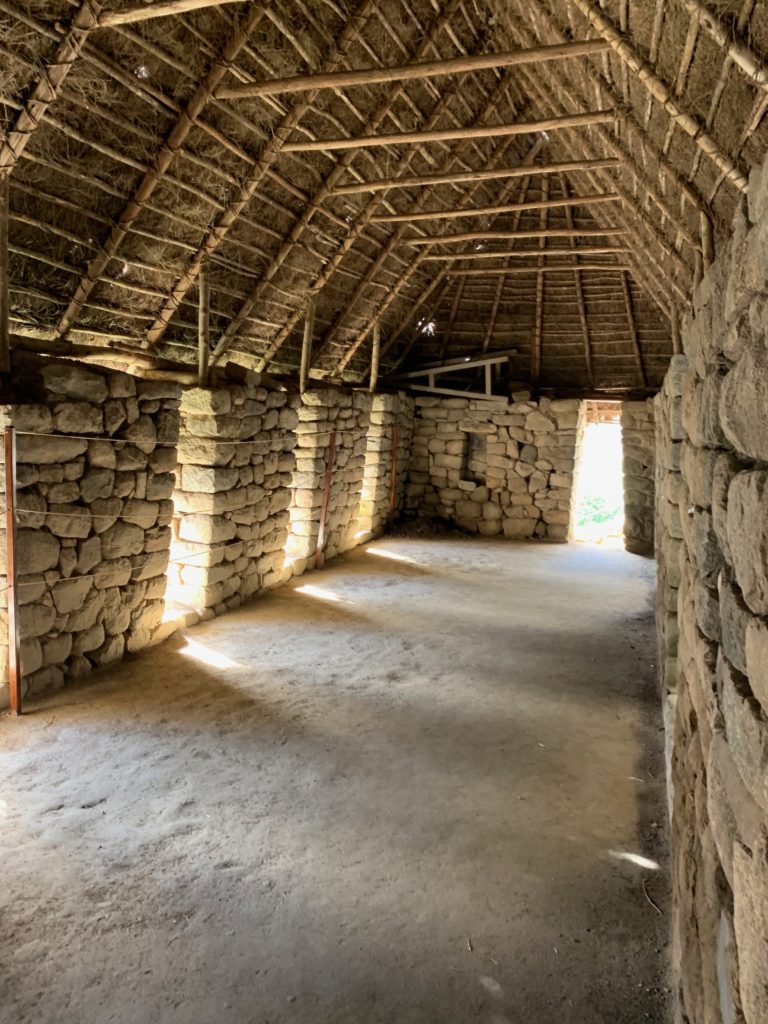
We headed back past the city gate and re-entered the agricultural sector. Our group was getting tired, so we decided to take a rest at one of the terraces. From here, we gazed over the ruins for one last time before heading back to the main entrance. My visit to Machu Picchu could not have been more spectacular. This Inca site is truly one of a kind with its ability to blend in
Descending Back to Town
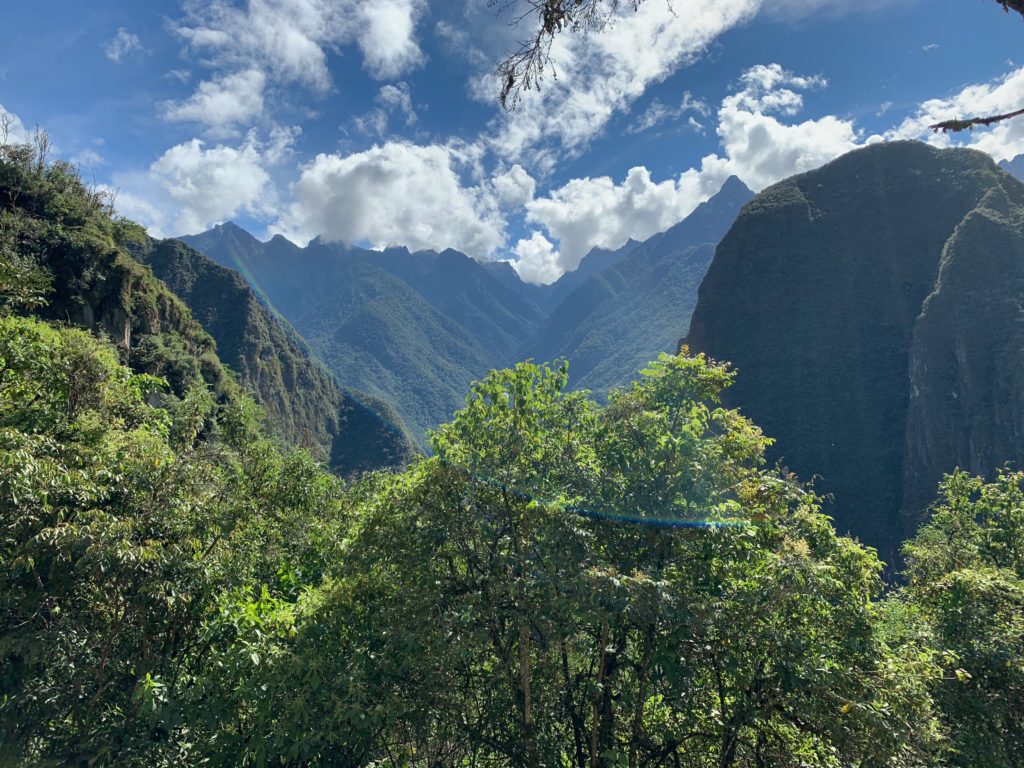
After leaving the citadel, the group parted ways. Patty and Amy decided to hang out at the restaurant on-site, while Ilana and Maggie took the bus back into town. I decided to begin my descent back down the steps. As it was mid-morning, the sun was out, and I gazed over the beautiful landscape of the surrounding valley. The trail here was reminiscent of the jungle portion of our trek, with lush vegetation everywhere.
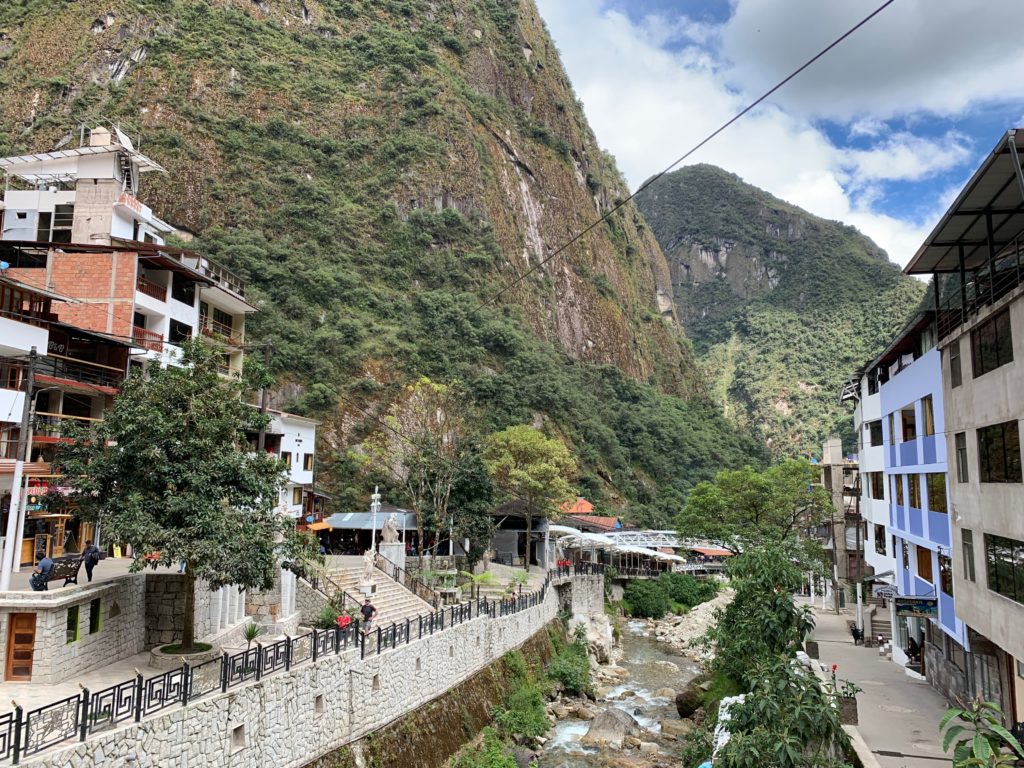
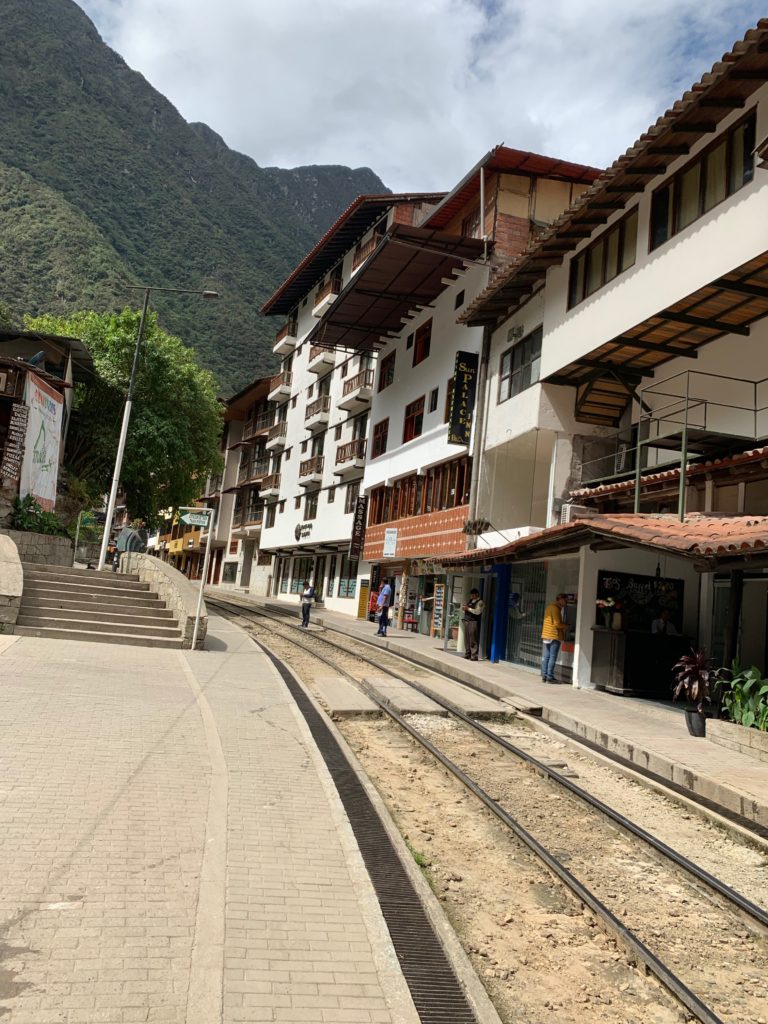
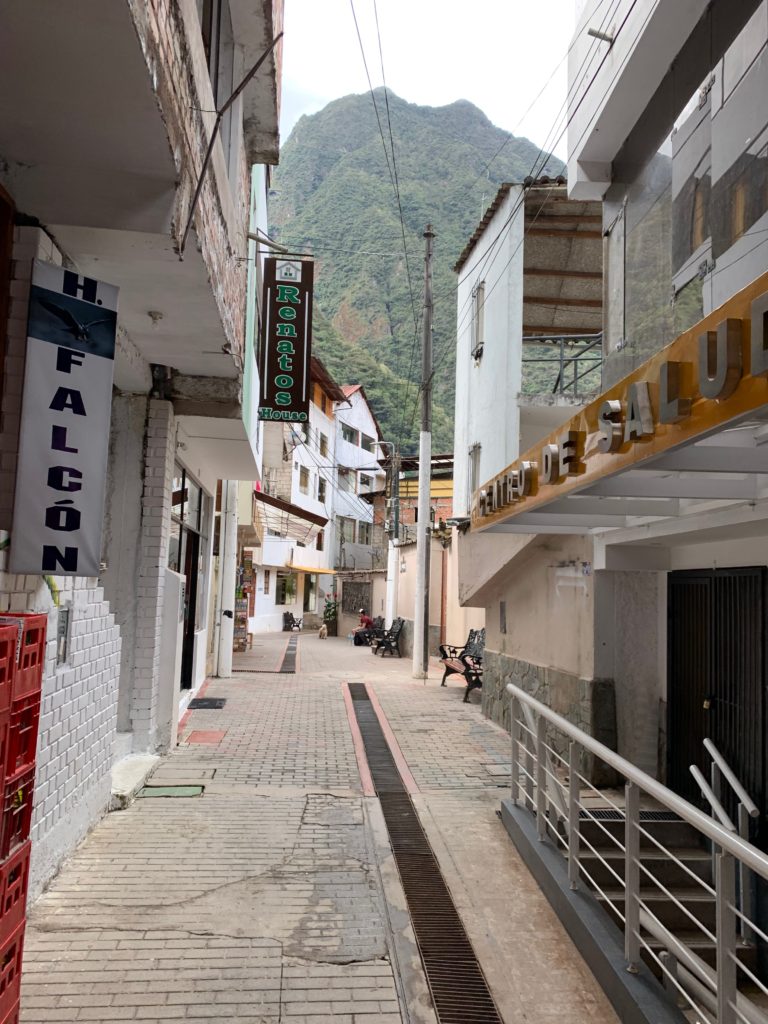
I spent the afternoon in Aguas Calientes. This bustling town was founded near some natural thermal baths, of which it is named after. Today, the town primarily functions as a base for visitors to Machu Picchu, and as a result, has the most expensive prices of any place in Peru. Whereas in Cusco, you can buy a decent meal for less than 10 USD, here, you would pay 30 USD for that same meal. The town itself is charming, with narrow streets and a mix of wooden and brick buildings. PeruRail runs right through the center of town.
Returning to Cusco
At around 4:00 p.m., our group met up at the train station for our ride back towards Cusco. I was certainly not ready to leave such an amazing area of the world. This four-day trek was a life-changing experience for me, and I not only pushed myself through a challenging hike, but I also saw one of the world’s most alluring sites.
We arrived back in Ollantaytambo, where a bus picked our group up to be shuttled back to Cusco. We all said our goodbyes before I arrived back at my hostel. I spent the night hanging out with the staff, as well as some other travelers I had met earlier in the week. I told everyone about my amazing adventure to Machu Picchu while enjoying my last pisco sours.
The following day, I flew out of Cusco towards Lima Airport to connect to my flight back to the U.S. Peru was such an amazing country to explore, and I cannot wait to return to my favorite sites and explore more of the country’s unique geography. I also continued to realize how much I found myself while traveling. Not only had I once again explored

1neapolitan
buying papers for college https://term-paper-help.org/
pay someone to write a paper https://sociologypapershelp.com/
order custom paper https://uktermpaperwriters.com/
help writing a college paper https://paperwritinghq.com/
what are the best paper writing services https://writepapersformoney.com/
apa papers for sale https://write-my-paper-for-me.org/
paper writing services for college students https://doyourpapersonline.com/
need help with paper https://top100custompapernapkins.com/
write my paper fast https://researchpaperswriting.org/
need help writing my paper https://cheapcustompaper.org/
help with filing divorce papers https://writingpaperservice.net/
write my paper for cheap https://buyessaypaperz.com/
where can i find someone to write my college paper https://mypaperwritinghelp.com/
what should i write my paper about https://writemypaperquick.com/
help with writing paper https://essaybuypaper.com/
someone write my paper https://papercranewritingservices.com/
paper writing services online https://premiumpapershelp.com/
writing paper services https://ypaywallpapers.com/
how to write my paper https://studentpaperhelp.com/
1whenever
coursework moderation https://brainycoursework.com/
database coursework https://courseworkninja.com/
coursework only degree https://writingacoursework.com/
coursework writing service uk https://mycourseworkhelp.net/
coursework plagiarism checker https://courseworkdownloads.com/
help with coursework https://courseworkinfotest.com/
online coursework https://teachingcoursework.com/
coursework moderation https://buycoursework.org/
data analysis coursework https://courseworkdomau.com/
online dting https://freewebdating.net/
asian dating https://jewish-dating-online.net/
best singles sites https://free-dating-sites-free-personals.com/
free site dating https://onlinedatingsurvey.com/
free chat and dating online https://onlinedatingsuccessguide.com/
dating sites really free https://onlinedatinghunks.com/
free dating site chatting https://datingwebsiteshopper.com/
zoosk login https://allaboutdatingsites.com/
free dating ads https://freedatinglive.com/
match dating site https://freewebdating.net/